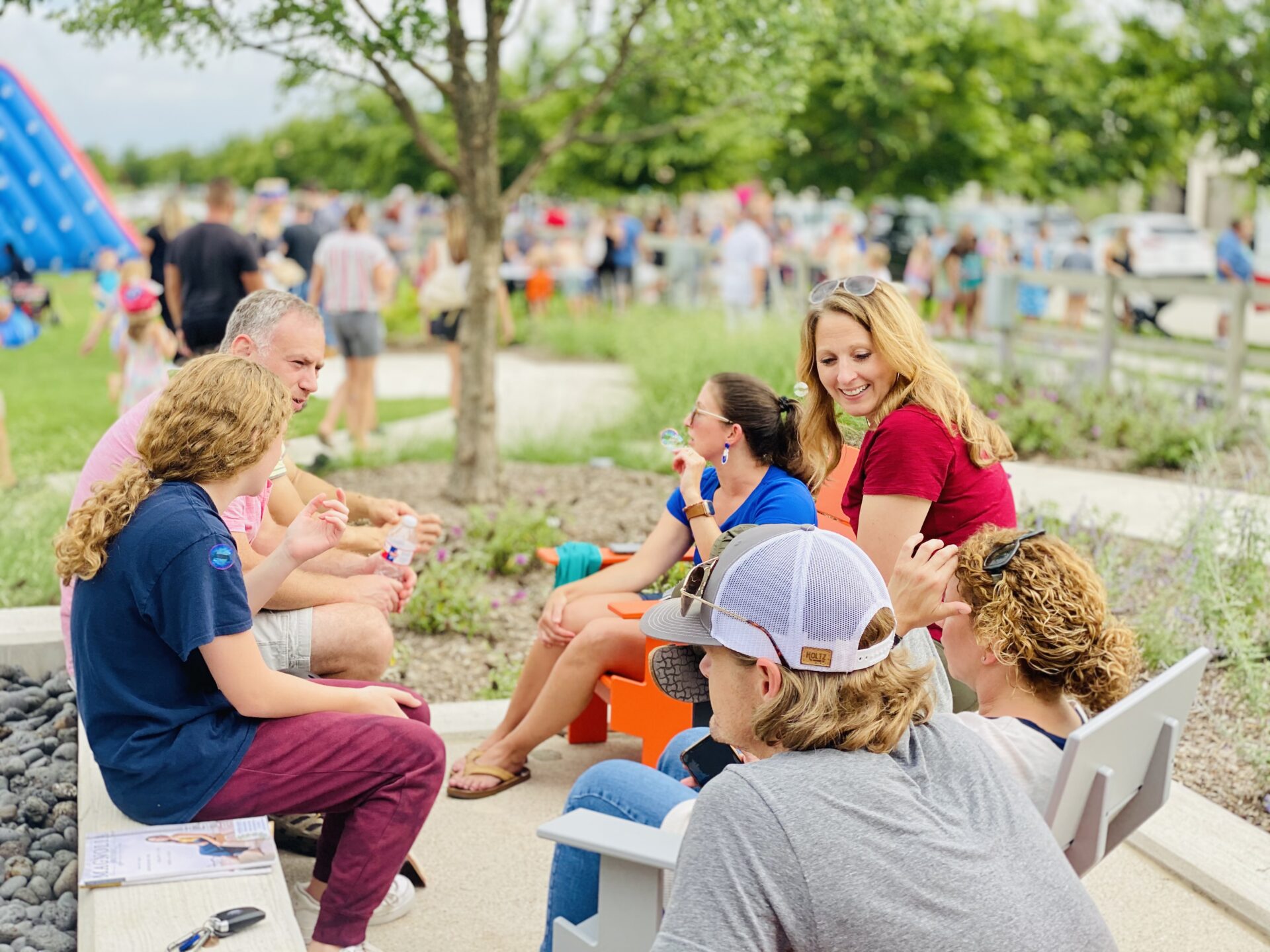
Living in a community is ideal at any age. It taps into how humans are wired: to seek connection, belonging, and collaboration. For many decades, we’ve gotten these needs met within our immediate family relationships. Then comes the empty nest. Both younger and older generations can experience a sort of loneliness that causes them to seek out new bonds. For most of us, these important bonds are formed with those who live nearby. Studies show, “proximity is the strongest predictor of friendship. The closer you live to another person, the more likely you are to be friends with them.” Enter: Multigenerational Communities. These are neighborhoods which have been planned and designed to welcome diverse age groups, inviting them to share their lives together and interact as part of a unified community. This primer highlights why multigenerational community living is a supportive lifestyle choice for folks of all ages.
Multigenerational living communities are characterized by the wide age ranges of their residents.
As baby boomers age, a greater percentage of the population is reaching that over 60 threshold and 90% want to own their own home so they can age in place. But 65-year-olds of today are very different from those a generation ago. They understand the importance of staying active and want to be close to age appropriate amenities where they can easily socialize and exercise.
Families just starting out may also seek out these intergenerational communities and neighborhoods. Especially if they don’t have family nearby or just because they value the wealth of knowledge and experience of older populations. It can be a great way to introduce children to new concepts and ways of living that helps broaden their worldview.
Intergenerational living really does offer residents the best of both worlds. Rather than a neighborhood of only young families or an age-restricted enclave for the autumn of life, these multigenerational households bring out the benefits of each. They’re at once alive with the infectious spirit of youth, as well as the wisdom and resources of their elders.
Connecting these two very different types of families can offer vital, mutual support that’s not guaranteed in a traditional new home community.
For young families:
For older community family members:
For both:
These questions will help clarify multigenerational living communities and why they can be so enriching.
Made of equal parts young families and older adults, these communities are designed to facilitate interaction between both family member types.
Also known as “age-friendly communities”, these neighborhoods encourage more than two generations to live and cooperate in close proximity to one another.
Creating an intergenerational community usually means designing housing that can support the needs of adult children and aging adults and building them near all-age homes and community centers.
Harvest by Hillwood in Argyle & Northlake is the ultimate place for connection and community at any age. Come see just how convenient and collaborative living in a multigenerational neighborhood of new construction homes can be! Contact us or start your online home search today!
